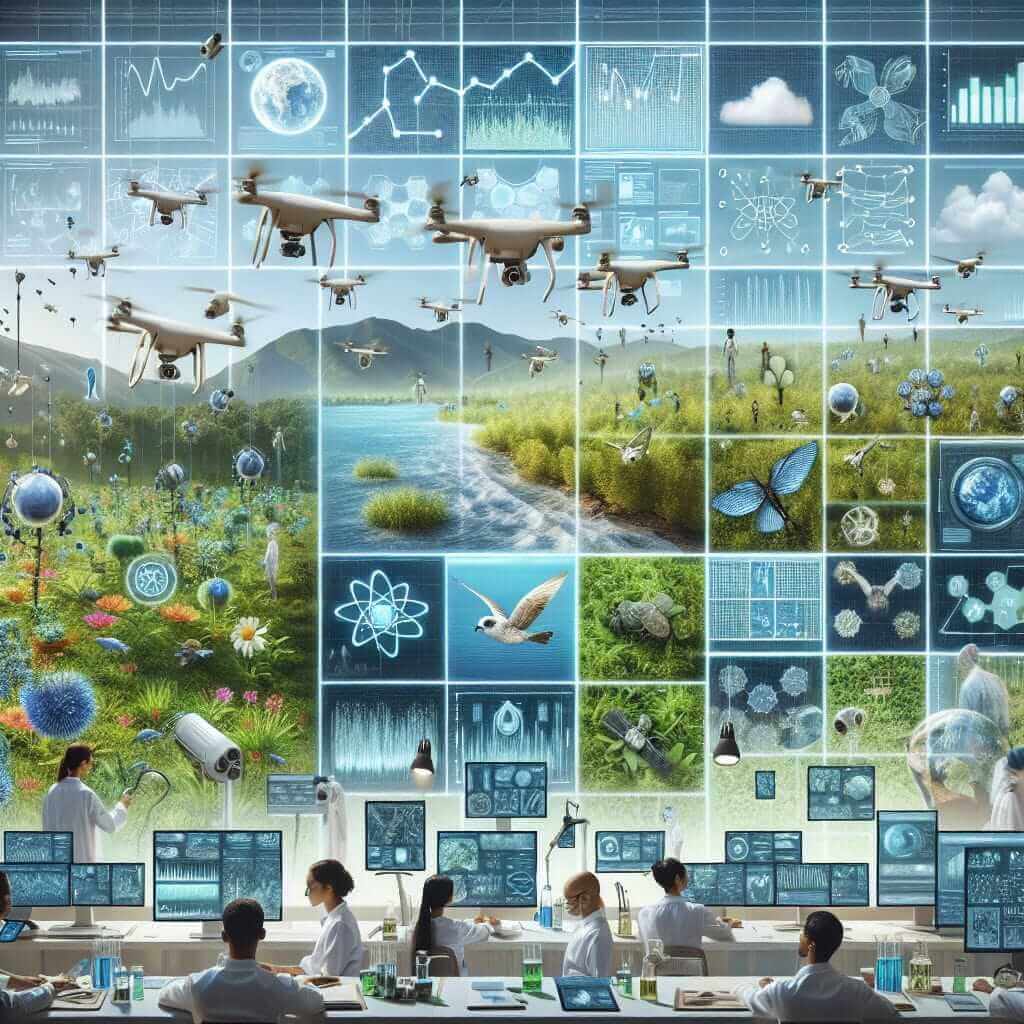The IELTS Reading section is a critical component of the IELTS exam, assessing a candidate’s ability to understand and interpret written texts. With topics ranging from science to social issues, it’s vital for candidates to familiarize themselves with diverse subjects. One recurrent and timely topic in recent IELTS exams involves technology, particularly how AI is revolutionizing various fields. This article delves into “How is AI being used in environmental monitoring?”—a pertinent subject with growing relevance in our modern world.
Given the increasing frequency of technology-related questions in the Reading section, understanding this topic can not only aid in better preparation for the IELTS but also enhance your general knowledge about current technological advancements. The likelihood of encountering similar subjects in future exams is high, making this topic an excellent study focus.
Reading Test
Passage: How is AI being used in environmental monitoring?
Artificial Intelligence (AI) is making significant strides in environmental monitoring—a crucial area for sustaining and preserving our planet. The application of AI in this field encompasses various methods and technologies, including machine learning, computer vision, and data analytics, all of which contribute to more efficient and accurate monitoring of the environment.
Firstly, AI plays a pivotal role in air quality monitoring. Through AI-powered sensors and algorithms, it is possible to detect and analyze pollutants in the atmosphere with high precision. These systems can predict pollution levels, identify sources of pollutants, and suggest effective strategies for reducing air pollution. For instance, machine learning algorithms are used to process large amounts of data gathered from sensors deployed across urban areas, providing real-time insights into air quality levels.
Secondly, AI is extensively used in monitoring water quality. By employing AI technologies, scientists can now monitor various water bodies, detecting contaminants and assessing the overall health of aquatic ecosystems. AI systems can analyze data from sensors measuring parameters such as pH, temperature, and chemical concentrations, thereby enabling early detection of pollution events. This allows for timely interventions to prevent potential environmental disasters.
Moreover, AI’s capabilities extend to wildlife conservation. AI-driven systems are harnessed to track animal movements and monitor their populations. Automated cameras equipped with image recognition software can identify and count species, providing critical data for conservation efforts. This information is invaluable for protecting endangered species and maintaining biodiversity.
Lastly, AI aids in disaster management. With machine learning models, it is possible to predict natural disasters such as floods, earthquakes, and hurricanes. These models analyze patterns and predict occurrences with greater accuracy, allowing authorities to prepare and respond more effectively, thereby mitigating the impact on human life and the environment.
In conclusion, AI’s integration into environmental monitoring signifies a transformative step towards more sustainable and responsive environmental management. The continuous advancement of AI technologies holds great promise for safeguarding our natural world and ensuring a healthier planet for future generations.
Questions
True/False/Not Given
- AI sensors can identify the exact sources of air pollutants.
- AI technologies are not yet capable of monitoring water quality effectively.
- Machine learning models can predict natural disasters such as earthquakes and hurricanes.
- AI-driven cameras require manual intervention to identify species.
Matching Information
Match each application of AI with the corresponding field:
A. Air quality monitoring
B. Water quality monitoring
C. Wildlife conservation
D. Disaster management
- Predicts pollution levels.
- Tracks animal movements.
- Analyzes pH and temperature of water bodies.
- Predicts natural disasters.
Answers & Explanation
True/False/Not Given
- True – “AI-powered sensors and algorithms… identify sources of pollutants.”
- False – “Scientists can now monitor various water bodies, detecting contaminants.”
- True – “Machine learning models… predict natural disasters such as floods, earthquakes, and hurricanes.”
- False – “Automated cameras equipped with image recognition software can identify and count species.”
Matching Information
- A – “AI-powered sensors… predict pollution levels.”
- C – “AI-driven systems… track animal movements.”
- B – “Analyze data from sensors measuring parameters such as pH, temperature.”
- D – “Machine learning models… predict natural disasters.”
Common Mistakes
- Misinterpreting Questions: Ensure you fully understand what the question is asking before answering.
- Ignoring Keywords: Pay attention to keywords in the passage that directly relate to the questions.
- Lack of Practice: Regular practice with similar passages will help you become more familiar with the question patterns.
Vocabulary
- Algorithm (n) /ˈælɡərɪðəm/
- A set of rules or steps used to solve a problem or perform a task.
- Contaminant (n) /kənˈtæmɪnənt/
- A substance that makes something impure or unsafe.
- Biodiversity (n) /ˌbaɪoʊdaɪˈvɜːrsɪti/
- The variety of life in the world or in a particular habitat or ecosystem.
- Ecosystem (n) /ˈiːkoʊˌsɪstəm/
- A biological community of interacting organisms and their physical environment.
Grammar Focus
Relative Clauses
- Definition: Relative clauses give us extra information about a noun.
- Example: “AI-powered sensors and algorithms, which can identify sources of pollutants, are highly precise.”
- Relative Pronoun: which
- Relative Clause: which can identify sources of pollutants
Tips for IELTS Reading Success
- Skimming and Scanning: Quickly skim through the passage to get the gist, and then scan for specific information related to the questions.
- Time Management: Allocate your time wisely and avoid spending too long on any single question.
- Practice Regularly: Use a variety of reading materials to enhance your comprehension skills.

By integrating these strategies and focusing on diverse topics such as “How is AI being used in environmental monitoring?”, you can effectively prepare for the IELTS Reading section and enhance your overall English proficiency. Good luck!